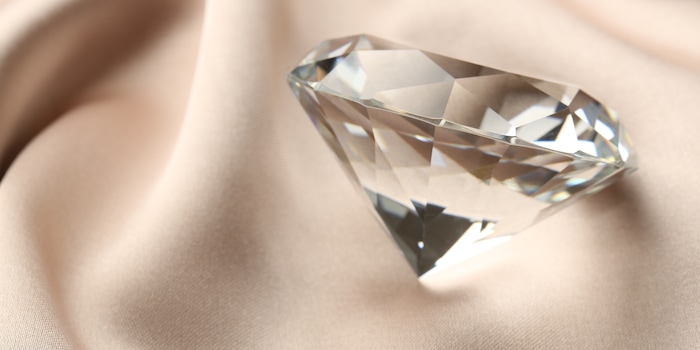
Diamond-based quantum sensor measures a rat's heart signals
Quantum sensors can be used to measure the extremely weak magnetic fields of the heart. However, existing devices are expensive, bulky and require complex cooling. Now there is a promising alternative.
For the first time, a diamond-based quantum sensor has measured the magnetic heart signals of an animal outside the body. This is reported by a team led by Xing Rong from the University of Science and Technology of China in a study, which has not yet been finalised and published on the preprint server "arXiv". It will soon appear in the journal "Physical Review Applied". It is an important step towards the widespread use of highly sensitive, quantum-based sensors in medicine.
Magnetic signals from the heart are a useful indicator of cardiovascular disease. However, they are also extremely difficult to detect because their magnetic field strength is in the picotesla range and is therefore millions of times weaker than that of the Earth's magnetic field, for example. To measure the signals, doctors have so far used special superconducting magnetic field sensors, known as SQUIDs, which are very expensive and bulky and have to be cooled to extremely low temperatures in the millikelvin range. Sensitive quantum devices based on diamonds could be an improvement. Unlike superconducting quantum interferometers (SQUIDs), these can also be operated at room temperature. But until now, open-chest surgery was required to use them, first author Xing Rong told New Scientist.
The quantum sensor he developed with his colleagues contains a diamond about 100 micrometres thick, in which some of the carbon atoms have been removed and replaced with nitrogen. These changes affect the quantum states that the diamond's electrons can assume. When the diamond is irradiated with a laser and microwaves, it glows with different intensities when it perceives different magnetic fields.
The researchers tested their sensor on a live rat. To record the heart signals, they used various techniques to improve sensitivity. For example, they amplified the magnetic signal around the diamond with the help of several components that bundle the magnetic flux. Although the sensor still lacks precision, the experiment proved that this non-invasive approach can work, said team member Ziyun Yu.
Jörg Wrachtrup from the University of Stuttgart told New Scientist that although similar demonstrations had already been carried out, these had taken place in more artificial laboratory situations. "This is a solid step forward, which is certainly inspiring and informative." If the sensitivity of the new sensor were improved, it could be attached to existing medical devices such as endoscopes, for example, thanks to its small size. "This would have an impact on everyday clinical applications," he said. "Surgeons have already told me that such a device would be very helpful."
Spectrum of Science
We are a partner of Spektrum der Wissenschaft and want to make sound information more accessible to you. Follow Spektrum der Wissenschaft if you like the articles.
Original article on Spektrum.deExperts from science and research report on the latest findings in their fields – competent, authentic and comprehensible.